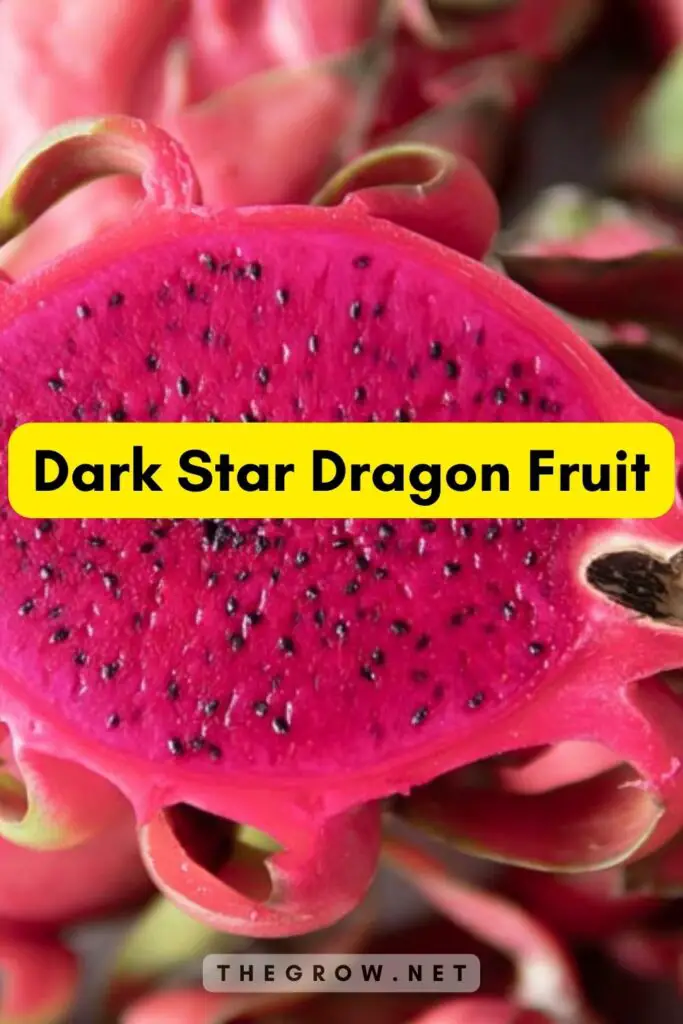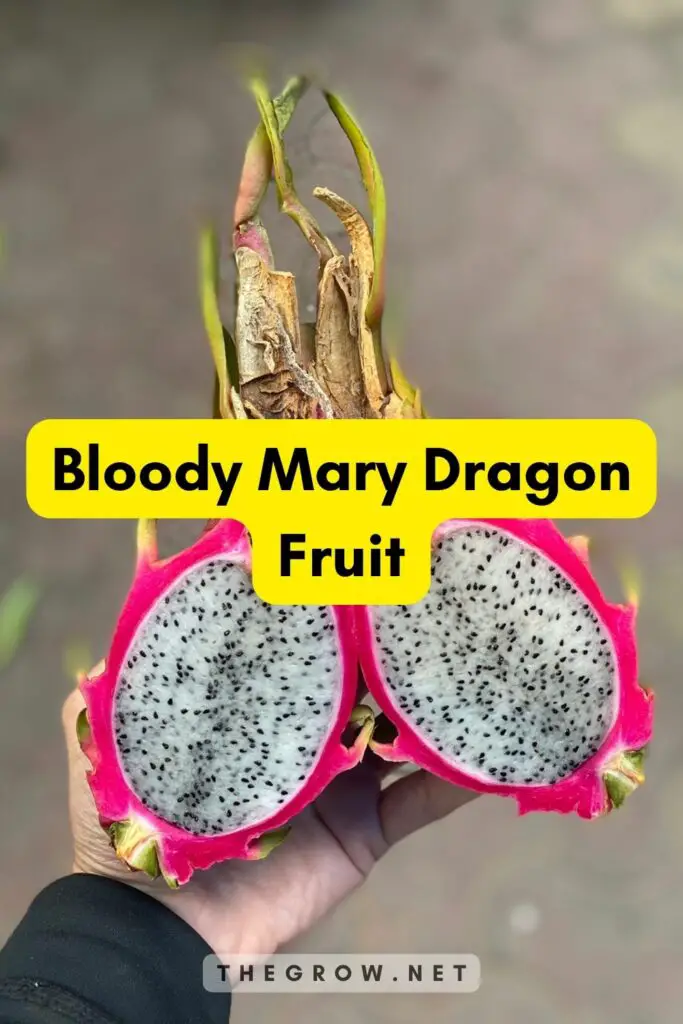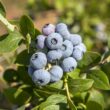In This Article Show
Because of its delicious flavor and succulent flesh, dragon fruit is a popular addition to smoothies and salads. It can be traced back to Central and South America. The tropical Dragon fruit grows well in home gardens.
Because of its unique, juicy, and sweet flavor, dragon fruit is often referred to as the “King of Fruits”. Its exotic appearance, with various colors including red and yellow, is the icing on the cake.
Dragon fruit is an excellent choice for your next fruit propagation. We’ve listed 18 of the most common and rare dragon varieties.
NEW: Scindapsus Varieties List: 10 Common And Rare Types
Dragon Fruit Overview
| Common name | Dragon fruit, pitaya |
|---|---|
| Scientific name | Hylocereus spp., Selenicereus spp. |
| Family | Cactaceae |
| Origin | Central and South America |
| Height | Vines or climbing cacti, can reach up to 20 m |
| Leaves | Green, fleshy, and oval-shaped |
| Flowers | Large, white, and nocturnal |
| Fruit | Red or yellow, ovate or cylindrical, with scales |
| Season | Summer |
| Climate | Tropical and subtropical, requires warm temperatures |
| Soil | Well-drained, sandy, and slightly acidic |
| Light | Full sun to partial shade |
| Watering | Regular, but avoid water-logging |
| Propagation | Cuttings or seeds. |
NEW: Caladium Varieties 2024: 30 Common And Rare Types Of Caladium
18 Most Common And Rare Dragon Fruit Varieties
Continue reading to discover your next-to-plant fruit.
Get Gardening For Beginners
Our new EBOOK shows newcomers and green thumbs alike a step by step guide to growing the garden of their dreams.
1. Colombiana Dragon Fruit

Also called Yellow dragon fruit, Colombiana is one of the sweetest and juiciest dragon fruit varieties. Its yellow skin and thorns can easily identify it.
Its thorns can easily be brushed off once it’s ripe. It takes about 60 days for Colombiana to start to change from green to yellow and about three months after propagation for the fruit to ripen.
We advise that although the flesh of the Yellow dragon fruit is tasty, you should never eat the seeds because they are bitter. Since Colombiana is an exotic fruit, it falls on a pricey scale but its delicious taste is worth your money.
2. Dark Star Dragon Fruit

Dark Star dragon fruit is a hybrid product of Hylocereus guatemalensis and Hylocereus undatus. Dark Star can easily be distinguished from other varieties with its dark pink skin and light pink flesh. This variety is one of the most propagated varieties due to its easy propagation, maintenance, and fast growth.
Dark star dragon fruit has a sweet, tangy flavor similar to a grape. Note that to preserve the edibility of the fruit, you should harvest it immediately when it is ripe; hence, there is a high tendency for the fruit will burst. Also, to preserve the tangy flavor of your dark star, do not water for about two days before harvesting.
3. David Bowie Dragon Fruit

David Bowie is similar to Dark Star, the major distinction between varieties is that David Bowie has a dark pink skin color but white flesh while Dark Star has dark pink skin color and light pink flesh. David Bowie has a sweet and tangy flavor similar to Dark Star. Like Dark Star, David Bowie is also a fast grower.
It is a great choice for juicing and garnishing and is best enjoyed chilled and fresh. They will bloom and produce tasty fruits if their growth needs are provided adequately. Their growth needs are organic soil, a humid environment, proper watering, adequate sunlight, and periodic fertilization.
Get Gardening For Beginners
Our new EBOOK shows newcomers and green thumbs alike a step by step guide to growing the garden of their dreams.
4. Delight Dragon Fruit

Delight dragon fruit is another fast-growing variety popular for its flavorful taste. Like most varieties, they are fast-growing but they should not be grown in cold climes but in warm environments. This variety can be container or ground-grown and it will thrive to produce tasty fruits if its growth needs are adequately provided.
The exterior color of the Delight dragon fruit is magenta while its interior is light pink. It has a creamy and smooth texture similar to ice cream. At maturity, Delight fruit is often medium-sized. For propagation, you can get your Delight dragon fruit from grocery stores or online nurseries.
5. Halley’s Comet Dragon Fruit

Halley’s Comet is a sweet variety with dark pink skin, green spikes, and purple flesh. Since it’s a hybrid, it can’t be traced to natural habitats but it can be found in grocery stores and nurseries. Halley’s Comet’s origin can be traced to California.
At full maturity, the fruit tree can grow to 10 feet. This variety has a similar taste to strawberry and it’s equally tasty.
If you need to plant Halley’s Comet, order its cuttings and propagate in organic soil whilst providing other growth needs. Halley’s Comet is a perfect ingredient for a summer salad or smoothie.
6. Yellow Thai Dragon Fruit

Yellow Thai dragon fruit is a hybrid product of Selenicereus megalanthus and Hylocereus undatus. It’s often confused with Yellow Dragon because they share a similar color but both are different varieties. Compared to Yellow Dragon, Yellow Thai is a faster-growing variety that is easy to propagate and maintain.
The fruit develops thorns at the end of its fins but they can easily be brushed off. You can substitute Yellow Thai for Yellow Dragon fruit for your salad and smoothie recipes.
It’s a great choice for beginners who want to start Dragon fruit propagation. Like most Dragon fruit varieties, do not give water shortly before harvesting else its delicious taste will be altered.
7. Sugar Dragon Fruit

Sugar Dragon belongs to the league of the sweetest dragon fruit varieties. It is a hybrid product of Hylocereus guatemalensis and another unknown species, hence it is a rare variety. Sugar Dragon has a red-green exterior with red-purplish flesh.
Due to its sweetness, Sugar Dragon is a great ingredient for jams and salads. Smoothies and garnishes. To grow flavorful dragon fruits, ensure their soil is never soggy but is always kept moist. Also, avoid leaving Sugar Dragon on the vine for too long.
The best time to harvest Sugar Dragon is after summer or during fall because the summer sunlight would have fully nourished the fruit.
8. Purple Haze Dragon Fruit

Purple Haze fruit is a unique variety of fruit that can make any salad, smoothie, or dish pop with its vibrant colors. Native to the tropical regions of South America, Purple Haze fruit has a sweet and sour flavor that can transform any recipe into something extraordinary.
Purple haze fruit is becoming increasingly popular in the culinary world with its bright colors, unique flavor, and health benefits to boot. Purple Haze fruit does not require much care in the growth stage, as it does not require a lot of sunlight or water.
To get the most out of this fruit, you’ll need to grow it yourself. Purple Haze fruit grows best in warm climates and can be grown in a couple of different ways.
9. Lisa Dragon Fruit

The Lisa dragon fruit, also known as the Pitaya Blanca, is related to the prickly pear cactus, a tropical fruit that is native to Mexico. The Lisa dragon fruit plant is a species of cactus that produces sweet, pink fruit.
The Lisa dragon fruit plant grows best in warm climates and requires plenty of sunlight. It can be grown in a container or on the ground, and it will need regular watering.
The plant can reach heights of up to 30 feet, but it typically grows between 10 and 15 feet tall. It has a thick stem that is covered in thorns, and it produces large, fleshy fruits that are either white or red.
10. Guyute Dragon Fruit

Guyute is a sweet and juicy dragon fruit, which is long-lasting and can be eaten raw or cooked. It has a smooth texture and flavor. The fruit is easy to peel and it has a high nutritional value. Guyute is one of the most popular fruits in Malaysia.
Guyute dragon fruit is widely cultivated mainly in India, Malaysia, and Central America. It has a firm yet juicy flesh, which is dark red or purple when ripe, and is fragrant when crushed.
The flavor of Guyute dragon fruit grows increasingly sour as it matures and approaches its fully ripe state where it becomes sweet.
11. Cosmic Charlie Dragon Fruit

Cosmic Charlie is a delicious dragon fruit that can be traced to India. It has a sweet, juicy taste and is very easy to grow. It grows best in warm temperatures and requires little water or fertilizer. The bright yellow skin turns deep orange when ripe, so harvest your Cosmic Charlie fruit when it is fully colored.
Cosmic Charlie can be ground or container grown under controlled conditions but if their growth needs are provided adequately, they will yield delicious fruits.
Cosmic Charlie is not only a great source of fiber but it has been shown to reduce overall cholesterol and the amino acids, lysine, and methionine are known to assist in collagen production. In addition, it’s high in vitamin C, which has been shown to promote cardiovascular health.
12. American Beauty Dragon Fruit

American Beauty dragon fruit is a sweet, tangy fruit that is native to Mexico. It grows on trees in rainforests and has thin, green skin full of tiny black dots. It flowers in mid to late spring and produces fruits from mid-summer onwards. The flesh is speckled with yellow gold, or mottled pink and yellow.
This delicious-looking fruit looks and tastes good on its own or as a colorful addition to your fresh fruit salad. If you’re looking for a bright, crunchy alternative to grapes, look no further than American Beauty dragon fruit. When fully ripe, the soft texture of the flesh becomes more creamy than fibrous.
13. Bloody Mary Dragon Fruit

Bloody Mary is often described as a sweet and sour fruit that can be eaten straight out of hand. The taste is similar to lychee or hibiscus with an extra pungent flavor aftertaste once it has been chewed. It has pinkish-red or greenish-yellow skin and is covered with red spots or blotches.
The flesh is yellowish-white, tough, and stringy when ripe. This Bloody Mary dragon fruit is grown in a humid and warm climate. The Bloody Mary plant grows well in partial shade, but it also does well under full sunlight. The fruit will produce delicious juices when ripe.
14. Zamorano Dragon Fruit

The Zamorano dragon fruit can be traced to South America and its name in the Philippines comes from its exotic appearance and flavor which is said to be similar to pineapple. One of the most popular varieties, its dark skin has light-yellow flesh and a very sweet taste.
The flesh of this fruit is crisp and juicy and its seeds contain small hard black seeds that are slightly larger than the sunflower seed. Its delicious taste and high nutritional value have made it a popular choice for consumers looking for great-tasting foods that also offer health benefits.
15. Vietnam Jainam Dragon Fruit

This exotic fruit looks like a cross between a lychee and a kiwi. Its skin is smooth and green with slightly raised scales on the bottom half; The skin is yellow to orange-red, with white flesh. This dragon fruit variety is rich in calcium and vitamin A, with a very high source of antioxidants.
Vietnam Jainam also provides the body with fiber to aid digestion and overall digestive health, lowering cholesterol levels while improving bone strength and slowing down aging.
Its texture can be described as juicy and succulent, which makes it super delicious when eaten fresh out of its skin. Vietnam Jainam dragon fruit is soft and juicy when eaten fresh.
16. Thompson Dragon Fruit

Thompson is a sweet, juicy, and refreshing dragon fruit variety. This dragon fruit variety requires organic soil and is relatively easy to grow. It prefers a warm, semi-shade area, and will tolerate some drought.
It can be easily propagated from seed and can be grown indoors as well as outdoors. It has an impressive lemon-lime flavor that is sweet, tart, and tangy. They can be added to salads to add texture and color or used to make juice. Thompson dragon fruit is high in fiber, and vitamins A and C.
17. Makisupa Dragon Fruit

The Makisupa dragon fruit can be traced to the Philippines. Makisupa dragon fruit has a rich, creamy, and delicious taste. The fruit is high in vitamin C and fiber and is a good source of manganese, copper, and iron. It can be eaten raw or cooked as well as making healthy desserts, juices, and smoothies.
This variety prefers deep, rich soil with good drainage. The plant also requires adequate watering plenty of water to keep the plant producing both fruit and foliage.
Like most varieties, Makisupa can be ground or container-grown. Since it can be container-grown, you can place it on a patio or balcony to grow fruit inside.
18. Harpua Dragon Fruit

The Harpua is a variety of dragon fruit native to the Philippines and found in Indonesia, Malaysia, Thailand, and Singapore. It has big dark purple-skinned fruit, with greenish-yellow flesh that resembles an iced berry.
The flavor is somewhere between lychee and pineapple. The fruit contains vitamins, dietary fiber, and antioxidants. Harpua dragon fruit is great as a healthy snack or a side dish to your main meal at home.
Harpua dragon fruit is easy to grow and is available at local nurseries and garden centers. Harpuas can be grown on almost any type of soil with full sun or partial shade.
Frequently Asked Questions
What are some common varieties of dragon fruit?
Some common varieties include Hylocereus undatus (red flesh), Hylocereus polyrhizus (white flesh), Selenicereus megalanthus (yellow flesh), and Hylocereus costaricensis.
What is the difference between red dragon fruit and white dragon fruit?
The main difference between red dragon fruit and white dragon fruit is the color and flavor of the flesh. Red dragon fruit has a sweeter and slightly tangy taste, while white dragon fruit has a milder and less sweet taste. The skin color and the size of the fruit may also vary.
What sets the yellow dragon fruit apart from others?
The yellow dragon fruit (Selenicereus megalanthus) is a less common variety that has yellow or orange flesh. It is known for its sweet and juicy taste, and it is also rich in Vitamin C. The skin of the yellow dragon fruit is thinner than the red or white variety.
Are there any dwarf varieties of dragon fruit?
Yes, there are dwarf varieties of dragon fruit such as Hylocereus marginatus, which only grow around 3-4 meters in height. These varieties are more suitable for indoor growing or for small gardens.
Are there any organic dragon fruit varieties?
All the dragon fruit varieties can be grown organically by using organic fertilizers and avoiding the use of chemical pesticides. However, it’s important to note that not all dragon fruit varieties are available in organic form, it’s best to check with local growers or specialty stores to find out what is available in your area.
Final Note
Most Dragon fruit varieties are delicious if their growth requirements are met and their fruits are harvested once ripe. Since these varieties are easy to grow and maintain, which dragon fruit variety are you growing next?










